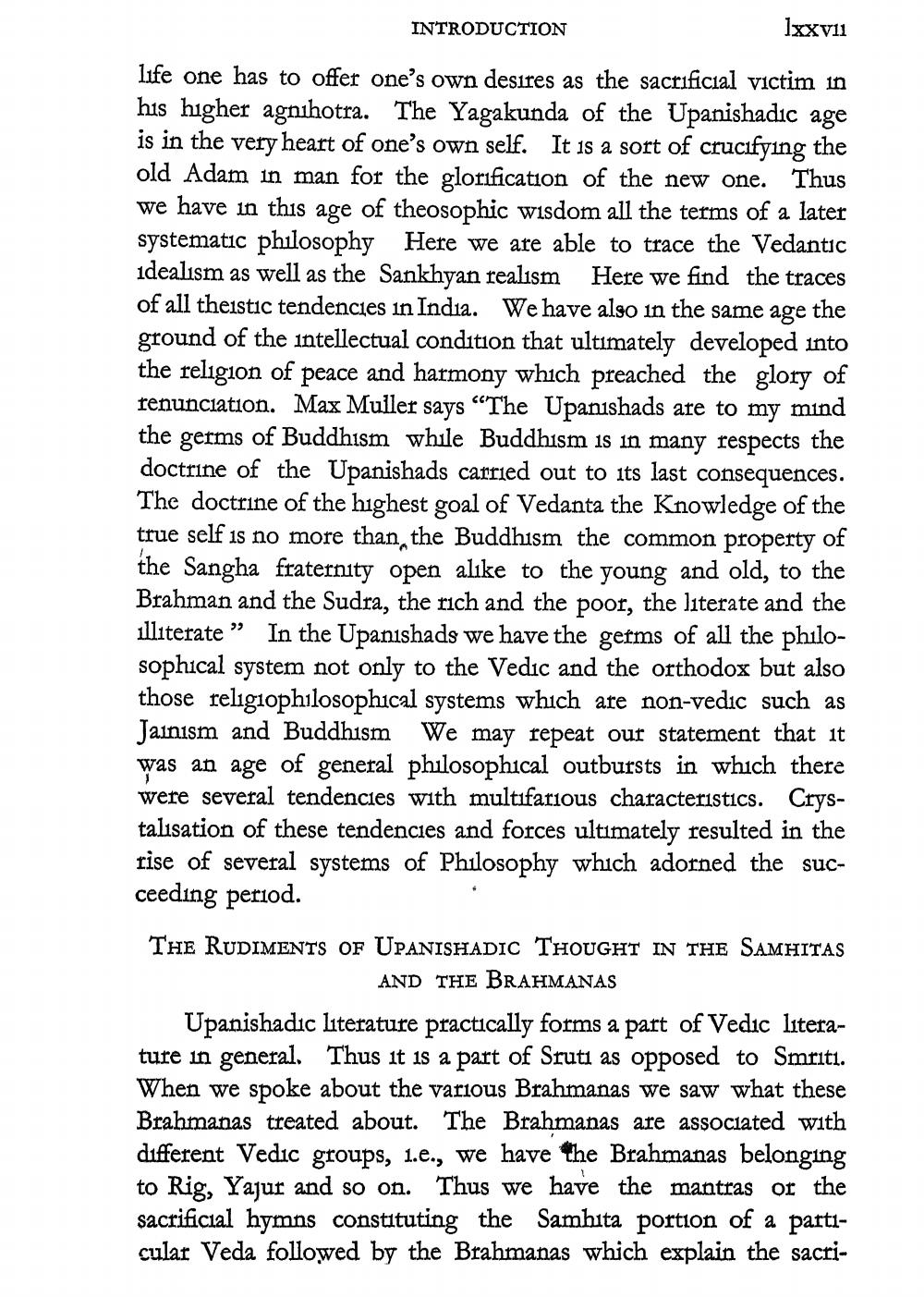________________
INTRODUCTION
lxxv11 life one has to offer one's own desires as the sacrificial victim in his higher agnihotra. The Yagakunda of the Upanishadıc age is in the very heart of one's own self. It is a sort of crucifying the old Adam in man for the glorification of the new one. Thus we have in this age of theosophic wisdom all the terms of a later systematic philosophy Here we are able to trace the Vedantic idealism as well as the Sankhyan realism Here we find the traces of all theistic tendencies in India. We have also in the same age the ground of the intellectual condition that ultimately developed into the religion of peace and harmony which preached the glory of renunciation. Max Muller says “The Upanishads are to my mind the germs of Buddhism while Buddhism is in many respects the doctrine of the Upanishads carried out to its last consequences. The doctrine of the highest goal of Vedanta the Knowledge of the true self is no more than the Buddhism the common property of the Sangha fraternity open alıke to the young and old, to the Brahman and the Sudra, the rich and the poor, the literate and the ulliterate ” In the Upanishads we have the germs of all the philosophical system not only to the Vedic and the orthodox but also those religiophilosophical systems which are non-vedic such as Jainism and Buddhism We may repeat our statement that it was an age of general philosophical outbursts in which there were several tendencies with multifarious characteristics. Crystalisation of these tendencies and forces ultimately resulted in the rise of several systems of Philosophy which adorned the succeeding period. THE RUDIMENTS OF UPANISHADIC THOUGHT IN THE SAMHITAS
AND THE BRAHMANAS Upanishadic literature practically forms a part of Vedic literature in general. Thus it is a part of Sruti as opposed to Smriti. When we spoke about the various Brahmanas we saw what these Brahmanas treated about. The Brahmanas are associated with different Vedic groups, 1.e., we have the Brahmanas belonging to Rig, Yajur and so on. Thus we have the mantras of the sacrificial hymns constituting the Samhita portion of a particular Veda followed by the Brahmanas which explain the sacri




